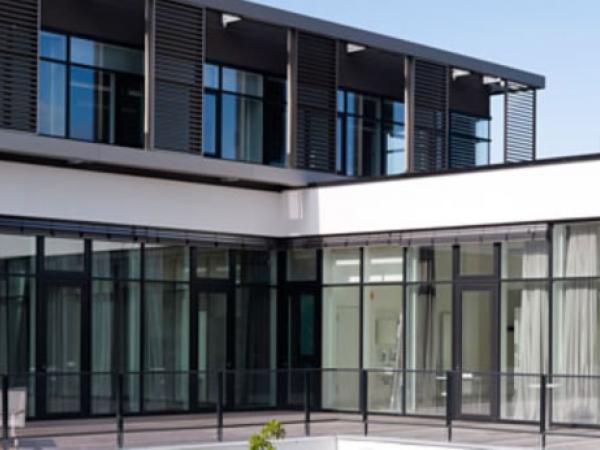
Date: 31 July 2015
Where solar control glass is concerned, it is possible to plan thermal insulation, light transmission, energy transmittance and selectivity with such a bandwidth and accuracy that, for every interior room, the energetically optimum balance can be found between sufficient daylight, the avoidance of extreme cooling loads and the desired solar heat gain for the reduction of the heating energy requirement.
However, this optimum will not be the same for all areas of the facade. The north and the south sides of a building most certainly have different requirements. Natural shade, existent or perhaps non-existent solar control devices and even the individual use of the room can lead to glazing with various photo-spectrometric qualities being required. From a purely technical point of view, such a mix is barely a problem either. In particular in the case of representative buildings with large area glazing, however, the architects expect at the end that the various type of glazing with their different technical properties will produce a homogeneous, self-contained image.
And that is then a challenge after all: different solar control coatings on a single building that look like they came from the same mould with regard to reflection, colour and indeed the entire visual impression. One way to achieve that is to use very (colour-) neutral solar control glass, possibly coupled with a low-reflection and thus inconspicuous external effect. The energetic functionality of the coatings is ‘hidden’ from sight here, so to speak, in the colour-neutral view and transparency, so that the glass has a homogeneous appearance.
This approach for visually homogeneous functional glass with individual energetic characteristic values accommodates the overall architectural trend that we are currently seeing - that of using pure, simply transparent glass. However, a uniform appearance can also be demanded for tinted functional glass or coloured coatings - and similarly for parapet glass or other areas with tempered glass. Although this increases the technological demands, it also enhances the architectural expression and value of the glazing says Markus Hoeft, Freelance building trade journalist.
 600450
600450




















Add new comment